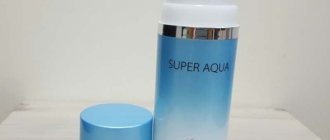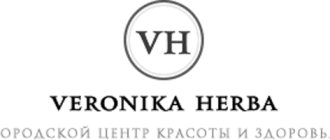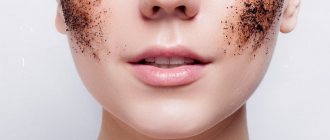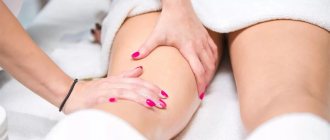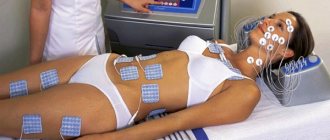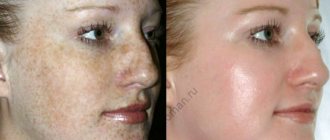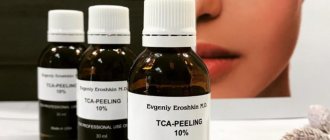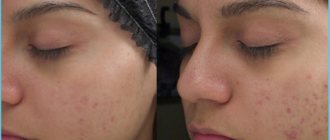From this article you will learn:
- Features of acid peeling
- Types of acid peeling by depth of effect
- Composition of acid peeling
- Indications and contraindications for acid peeling
- 5 stages of acid peeling
- Using acid peeling at home
- Cost of acid peeling in a beauty salon
Acid peeling for the face is a common and popular procedure in modern cosmetology. Different formulations have different effects on the skin. It is important to understand that such peels are not suitable for every person. They have a large list of contraindications.
We will tell you in this article about when and to whom such a procedure can be performed, how much it costs and what results to expect from it. You will also find out whether you can do acid peeling at home.
Features of acid peeling
Acid peeling involves the use of acids with varying degrees of concentration. This method allows you to influence skin tissue with greater or less intensity.
Peels differ from each other not only in the degree of impact, but also in the depth of penetration. During the procedure, different layers of the epidermis are exposed to certain types of acids of varying concentrations.
Where the peeling will be carried out (at home or in the salon) depends on the desired effect. In order for the session to end without any complications, doctors advise performing the procedure only in the presence of a specialist.
Recommended articles on the topic:
- Facial mesotherapy procedure: pros and cons
- Beauty injections: types of drugs, reviews
- Placental therapy is the secret of eternal youth
During chemical peeling, as a result of burns to the skin layers, natural regeneration processes are activated.
It seems that this method of restoring youth to the face is quite merciless. However, it helps not only make the skin more youthful, but also give it a healthy glowing appearance. In addition, peeling allows you to get rid of fine wrinkles and even noticeable scars left after acne and acne.
Let us consider the structural features of the human skin. This is necessary to understand the principle of action of acid peeling for the face. The substances included in the applied preparation, as already mentioned, have varying degrees of impact on certain layers of the skin.
Skin tissue consists of three main layers:
- Epidermis. This is the topmost layer. It is in it that epithelial cells develop and renew themselves. The epidermis is the visible layer. It performs a protective function, preventing the negative effects of external factors. This layer is favorably affected by cosmetics used in home care procedures (creams, serums, ointments, etc.).
- Dermis . Located directly under the epidermis. Between them is the basement membrane. The dermis is represented by two main layers: the first is papillary, the second is reticular, in which the main share of collagen fibers is concentrated. It is the dermis that is responsible for the overall appearance and condition of the skin tissue.
- The hypodermis (subcutaneous tissue, or fatty tissue) is located below the dermis. This layer is involved in the processes of thermoregulation of the body. The hypodermis accumulates water and nutrients.
During the process of chemical peeling, different layers of skin tissue are affected. Depending on the layer, the level of aggressiveness of the active components is selected. To achieve the desired result, various drugs are used, which are selected by a cosmetologist. This choice depends on the client's skin condition.
If you perform an at-home acid peel yourself, you should only use ingredients that are gentle on the epidermis (top layer).
What acids can be used
You can buy fruit acids at the pharmacy; they are sold in the form of a solution, powder, or tablets. An affordable price will allow everyone to feel the effect of renewed, refreshed skin.
Lemon - suitable for oily, problematic, teenage skin, copes with wide pores and bumpy texture. It has antioxidant properties, dries, and whitens pigmentation. The anti-inflammatory and antibacterial effect helps prevent the subsequent appearance of acne. The cost depends on the volume of packaging, but does not exceed 50 rubles.
Acetic - has bactericidal properties, helps reduce sebaceous secretion. Enzymes and minerals are involved in rejuvenation processes, toxins and oxidants are removed from the skin. Apple cider vinegar is used, the price of which is only 150 rubles.
Amber is an active participant in metabolic processes and stimulates regeneration processes. Together with ascorbic acid, it normalizes oxygen respiration of cells and activates blood flow. A well-known antioxidant, it attracts impurities, leaving the skin looking well-groomed and renewed. Can be found in tablets and powder, cost about 40 rubles.
Grape - found in every skin cell, responsible for metabolic and renewal processes. Used to lighten pigmentation and care for aging dermis. Effectively moisturizes the stratum corneum and has a comedolytic effect. Often used in composition with lactic acid. Buy 5 gr. possible for 180 rubles.
Polymilk - nourishes, moisturizes, whitens pigmentation. Universal, suitable for all skin types, eliminates oily shine, normalizes moisture balance. Used for delicate, thin skin prone to irritation and peeling. You can purchase an 80% solution for 50 rubles.
Trichloroacetic acid - used to restore smooth texture and get rid of wrinkles. During peeling, partial removal of the upper and middle layers of skin occurs. Helps restore a healthy, even color, cope with unexpressed wrinkles and pigmentation. Normalizes the condition of oily dermis, prevents the appearance of acne and blackheads. For superficial peeling, a 10-15% solution is used, for medium peeling - 30%. You can buy it for 580 rubles.
Additional ingredients can also be used for home peeling:
- honey - tones, whitens, saturates cells with vitamins and amino acids;
- salt - perfectly polishes, tightens pores, neutralizes oily shine. Has regenerating properties;
- kelp - moisturize, increase the immune properties of the skin, smooth out wrinkle networks;
- essential oils - moisturize, have a tonic, anti-inflammatory effect, stimulate rejuvenation processes;
- vegetable oils - nourish, moisturize, prevent swelling and tissue trauma.
Types of acid peeling by depth of effect
Acids affect the layers of the skin differently. To achieve the desired effect, it is important to correctly choose the type of active substance and the degree of concentration.
- Superficial peeling. Involves the use of weak acids. Moreover, their concentration and exposure time may be different. The result obtained depends on these parameters: the epidermis will be removed completely or partially.
- Peeling for middle layers of skin. To obtain a visible rejuvenation effect, the simultaneous effect is applied to two layers: the epidermis and dermis. As a rule, TCA (trichloroacetic) or retinoic acid is used as components of the active substance.
- Deep peeling is used only in a medical facility. This procedure is equivalent to surgery. During the deep peeling process, the effect reaches down to the hypodermal layer, which allows you to eliminate small scars (the consequences of acne or acne). The main active ingredient is phenol.
To avoid severe skin burns, do not use high concentration acids at home without medical supervision.
The peeling process is quite simple and involves applying a chemical mixture to the skin of the face. At the end of exposure, the solution is neutralized. The treated layers of skin begin to peel off after a few days.
Preparatory stage
Mild acid exposure can be used throughout the year. To successfully carry out home peeling, you need to follow simple recommendations:
- For a few days, use soft foams and gommages for cleansing.
- On the day of the procedure, limit the use of foundation and concealer with a comedogenic effect.
- It is better to carry out the procedure in the evening so that the skin has time to recover during sleep.
- Do not sunbathe for about a week; the use of acids can lead to uneven color, dryness, and flaking. It can be done in the summer, but be sure to use creams with a high protection factor.
- The day before, you cannot carry out cleanings, as well as other procedures that injure the integument.
Composition of acid peeling
Each acid affects the skin layers differently. The correct choice of active ingredients affects the results obtained.
- Fruit acid. It is one of the weakest. It is usually used when age-related changes are not yet very noticeable. Fruit acid can be used at home. The active ingredients are often grape, mangrove, cane or sugar acids. After peeling using these components, the skin becomes firmer and more elastic.
- Mandelic acid. It is used for antibacterial treatment of the skin. It helps reduce the severity of scars after acne and acne.
- Salicylic acid. It is most often used for patients with dark skin, as well as with seborrhea or for people suffering from hyperpigmentation or acne.
- Lactic acid. Rejuvenates the skin, makes it softer and more tender.
- Retinoic acid. This active substance is usually used in cosmetic medical institutions. The acid has a pronounced effect. For different age categories, the optimal concentration of the substance for exposure is selected. The stage of a chemical burn depends on the degree of acid concentration.
- Glycolic acid. This substance is intended to cleanse the top layer of skin (epidermis). With the help of glycolic acid, you can remove rashes and pigmentation, get rid of dirt plugs and sebaceous deposits.
The clinic specialist selects the procedure scheme, the type and concentration of the active ingredients, as well as the exposure time individually for each patient.
Many people think that without peeling and crusting on the skin, there is no effect from the procedure. This is a misconception, since some peels do not cause such a skin reaction as peeling.
When can exfoliation be performed successfully?
Many authoritative experts unanimously believe that the most favorable time for peeling is from November to March. This is justified by the fact that the usual exfoliation procedure ends with severe extensive burns and peeling, the face becomes “naked”, not protected from external exposure to ultraviolet rays. In summer, the intensity of radiation is highest, and it is much more difficult to protect yourself from it.
Important ! As a result, it is recommended to successfully carry out peeling in the autumn-winter season, when it is easier to protect the face from direct external influences.
The procedure is best performed in the cold season
Indications and contraindications for acid peeling
Acid peeling is a universal procedure; it can be used for the face and whole body. It helps eliminate stretch marks, make the skin more elastic and improve its tone after childbirth or sudden changes in body weight. The permitted age for acid peeling is 18 years and older. This procedure is considered especially effective for caring for problematic acne-prone skin. Acid peeling often precedes biorevitalization and mesotherapy.
Reasons for acid peeling for the face:
- presence of facial wrinkles;
- loss of elasticity and skin aging processes;
- enlarged pores;
- presence of pigmentation;
- dry and dehydrated skin;
- comedones;
- the skin is lumpy and dry.
Acid peeling makes the face fresher. The skin takes on a rested appearance, its tone is restored, scars and scars are evened out. With regular use of such peeling, the secretion of the sebaceous glands is significantly reduced, and the formation of comedones stops. In dry skin, after manipulation, the water balance and pH level are normalized.
Contraindications:
- damage to the skin (wounds, scratches, cuts);
- the skin is prone to allergic reactions that cause swelling and rashes;
- infectious diseases (rosacea, psoriasis, ARVI, herpes and others);
- previously unsuccessful cleaning with ultraviolet or laser;
- oncology;
- inflammation occurring in acute form;
- pregnancy and breastfeeding.
A specialist will help you choose the safest and most gentle product for any skin, even if it is super problematic. However, for each specific case, an individual peeling agent and tactics are selected.
Side effects and complications
Even gentle acid peeling causes a burn, so side effects such as swelling, redness, peeling and a feeling of tightness are a normal reaction and should not cause concern.
This usually goes away within a few hours after a superficial peel or a few days after a medium peel.
Very rarely, complications may occur:
- burns;
- uneven pigmentation;
- scars;
- allergic rashes.
These consequences disappear without a trace if you correctly follow the cosmetologist’s recommendations during the rehabilitation period.
Using acid peeling at home
Acid peeling can be done at home in a variety of ways. Currently, there are many cosmetic products containing active acids.
- A mixture of strawberries, pineapple, apple, banana is applied to the face and left to act for 20 minutes. Then the mask is washed off with warm water and a moisturizer is applied.
- Acid peeling can be purchased at a pharmacy. It is important that it matches the age characteristics of the skin. Products with citric, lactic, mandelic, and grape acid are suitable for home procedures.
- You can cleanse your facial skin with natural lemon, which has a degreasing and whitening effect. A cotton pad is moistened with freshly squeezed juice. After 10–15 minutes, rinse with warm water, after which moisturizer is applied to the skin.
- Cleansing mask with sour milk, sour cream, natural yogurt and lactic acid (4%) and oat bran. The mixture is applied to the face and left for 20 minutes, after which it is washed off with warm water.
- Grape acid is used for mature skin. During such acid peeling, according to customer reviews, a tingling sensation is felt. This method is not recommended for people with sensitive skin.
If peeling is carried out at home, it is better to purchase ready-made cosmetic formulations. Natural products are also suitable as they are safer. They can be safely used without fear of burns and other unpleasant consequences.
Experts recommend using mineral water, which has a neutralizing and calming effect, to wash off the acidic composition.
However, to achieve a positive result, it is better to perform peeling in a beauty salon.
Rehabilitation rules
Chemical exposure, or peeling, is an extremely serious local infliction of significant trauma to the skin of the face, which simultaneously begins the regeneration of skin cells and stimulates increased production of collagen and elastin.
Important ! All layers of skin with significant damage, for example, acne scars, wrinkles, pigmented reddish-brown spots, seem to be replaced with refreshed, absolutely firm, elastic skin.
And in order not to seriously damage it, you must strictly follow fairly simple rules during the rehabilitation period, which the doctor will definitely tell you about.
- During the next 24 hours after the procedure, it is forbidden to wash your face so as not to cause an infection or artificially cause irritation with chlorine tap water.
- After three days, the skin tightens and is successfully removed as a thin film. In its place, crusts and large scales actively appear, which are not allowed to be touched or removed with hands. Otherwise, the epidermis can be seriously damaged, and numerous scars and small scars may occur. It is recommended to initially use wound healing sprays.
- For washing, you can preferably use soft gels that do not contain abrasive particles and alcohol, which can cause irritation. Instead of towels for wiping, you should use rather soft sanitary napkins, carefully blotting the affected skin.
It is better to use anything for washing that does not contain abrasives and alcohol. - For five days, apply potent wound-healing pharmaceutical substances four times to the face using a spray, which will contribute to relatively rapid healing of the skin.
- After the past five days, you can simultaneously begin to use medicinal cosmetics to moderately moisturize the skin. When systematically applying protective cream to the skin, be sure to avoid removing crusts and scales with your hands - they will fall off on their own after a short time.
Don't forget to moisturize your skin
Until the skin is completely restored, it is not recommended to:
- take water procedures in the pool, rivers, in the bathhouse;
- be in the sun for a relatively long time, sunbathe in a solarium;
- stay in the cold for a long time;
- engage in active sports, as this is fraught with heavy sweating. Sweat on treated skin can cause discomfort and complications;
- apply makeup, use scrubs.
You need to give up a lot for a while
Important ! Only by regularly following all the medical recommendations of a cosmetologist can you successfully achieve excellent results and have rejuvenated, quite beautiful skin without serious blemishes.
Cost of acid peeling in a beauty salon
The cost of the procedure is affected by the type of acid used and its concentration. In addition, the price depends on the drugs used after cleansing the skin. The formation of the price tag is influenced by the rating of the salon, the region where it is located, as well as the qualifications and experience of the specialist performing the procedure. The average cost of a session is approximately 2,500–16,000 rubles.
The price also depends on the type of cleansing procedure. For example, superficial peeling will cost from 2,500 to 3,500 rubles, medium peeling can be done for 3,000–5,000 rubles, and deep peeling will cost from 5,000 to 6,000 rubles.
If the procedure is carried out using trichloroacetic acid, its cost will be 6,000–7,000 rubles. Peeling with retinoic acid is one of the most expensive. Its cost is approximately 11,000–16,000 rubles.
Why clients choose Veronika Herba Beauty and Health Center:
- This is a beauty center where you can take care of yourself at a reasonable cost, while your face and/or body will be treated not by an ordinary specialist, but by one of the best professionals in Moscow. This is a completely different, higher level of service!
- You can receive qualified help at any time convenient for you. The beauty center is open from 9:00 to 21:00, seven days a week. The main thing is to agree with your doctor in advance on the date and time of your appointment.
Sign up for a consultation with a specialist by phone +7 (495) 085-15-13
, and you will see for yourself!
Healing period
After the procedure, the skin needs careful care. Redness, swelling, and peeling may be observed, but not more than 3 days. To speed up the regeneration process and prevent side effects, it is necessary to follow a number of rules:
- use soft hypoallergenic foams and gels for washing, apply moisturizer 2 times a day;
- to relieve swelling and discomfort, you need to make a cool herbal compress;
- Do not drink alcohol for several days, refuse to play sports, visit the bathhouse, or solarium;
- Before leaving the house, use protective sprays and emulsions from ultraviolet radiation.
Attention! It is recommended to repeat home procedures no more than 3 times a month.
Opinion of cosmetologists
Experts discuss the application features and the effect of fruit acids.
A cosmetologist writes about the ineffectiveness of fruit peels for smoothing wrinkles. The problem will be solved by phenol medium or deep, which is performed only by experienced surgeons.
A user describes the benefits of superficial peeling.
The review indicates restrictions on visiting the sauna during the preparation stage and after the procedure.
Precautionary measures
Home procedures require compliance with safety precautions and accuracy when following recipes. Before use, you need to check the composition for a possible allergic reaction. Apply a small amount to the crook of your elbow, rinse after 20 minutes.
If there is no rash, irritation, or burning, you can use an exfoliant. There are a number of contraindications for which the procedure should not be performed:
- pregnancy, lactation;
- acne in the relapse stage;
- carrying out drug therapy;
- wounds, microcracks, burns on target areas;
- fresh tan;
- oncology;
- individual intolerance;
- rosacea;
- rosacea
Side effects:
- redness;
- peeling;
- burn;
- swelling;
- hyperpigmentation;
- inflammatory processes.
To speed up regeneration, moisturizing creams with an antiseptic effect are used. It is important to use products with a high protection factor before going outside.
Basic properties of salicylic acid45
Salicylic acid belongs to the group of isomeric hydroxybenzoic acids. It has high penetrating ability.
Salicylic acid normalizes sebum production, has a disinfecting and anti-inflammatory effect. It is characterized by slight hydrolysis of lipids, which ensures good cleansing of the skin from dead cells.
In sufficient concentration, the chemical compound is capable of coagulating pathogenic proteins. That is why if you have black spots on your chin*, cosmetologists recommend resorting to a salicylic peeling procedure.
.
Patient reviews
Users often use fruit acids in home care. If the rules and safety measures are followed, they are satisfied with the result. Often it is possible to achieve an effect comparable to professional cleansing.
The review describes the good results of using lactic acid for blackheads throughout the winter.
A participant writes about the ineffectiveness of store-bought peelings and the desire to test the effects of lactic acid at home. conditions.
Feedback on the use of a professional series exfoliant; the participant was not aware of the need to use a neutralizer during the procedure.
A user writes about a negative experience of salon peeling with trichloroacetic acid.
